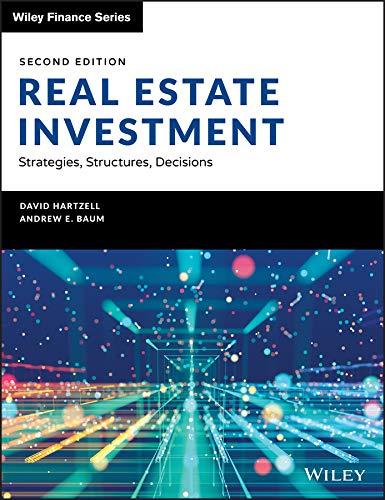PLEASE HELP! I WILL LIKE ANSWER!
A firm has the following investment alternatives. Each costs $14,000 and has the following cash inflows. | | Year |
| Cash Inflow | 1 | 2 | 3 | 4 |
| | $5,000 | $5,000 | $5,000 | $5,000 |
| | 4,000 | 5,600 | 5,100 | 4,300 |
| | 5,500 | 4,500 | 3,900 | 3,100 |
Investment A is considered to be typical of the firm's investments. Investment B's cash flows vary over time but are considered to be less certain. Investment C's cash flows diminish over time but because most of the cash flows occur early in the investment's life, they are considered to be more certain. The firm's cost of capital is 10 percent, but the financial manager uses a hurdle rate of 6 percent for less-risky projects and 14 percent for riskier projects. Use Appendix B and Appendix D to answer the questions. Assume that the investments are not mutually exclusive and there are no budget restrictions.
a. Based on the cost of capital, should any of the investments be made? Use a minus sign to enter negative values, if any. Round your answers to the nearest dollar.
A firm has the following investment alternatives. Each costs $14,000 and has the following cash inflows. Investment A is considered to be typical of the firm's investments. Investment B's cash flows vary over time but are considered to be less certain, Investment C's cash flows diminish over time but because most of the cash flows occur early in the investment's life, they are considered to be more certain. The firm's cost of capital is 10 percent, but the financial manager uses a hurdle rate of 6 percent for less-risky projects and 14 percent for riskier projects. Use Appendix 8 and Appendix D to answer the questions. Assume that the investments are not mutually exclusive and there are no budget restrictions. a. Based on the cost of capital, should any of the investments be made? Use a minus sion to enter negative values, if any. Round your answers to the nearest doliar. NPV(Investment A): \$ NPV(Investment B): $ NPV(Investment C): \$ should be made. b. If the financial manager uses a risk-adjusted cost of capital, should any of the investments be made? Use a minus sign to enter negative values, if any. Round your answers to the nearest dollar. NPV(thvestment A):$ NPV(Investment B): \$ NeV(Investment cil: 5 Imvestment B A. Investmentic cal DP Imvestments A and B a. Investments A and C Invastruents B and C Investments A,B and C Neither of investments typical of the firm's investments. Investment B's cash flows vary over time but are considered to be less certain. Investment but because most of the cash flows occur early in the investment's life, they are considered to be more certain. The firm's the financial manager uses a hurdie rate of 6 percent for les5-risky projects and 14 percent for riskier projects. Use Appendix questions, Assume that the investments are not mutually exclusive and there are no budget restrictions. pital, should any of the investments be made? Use a minus sign to enter negative values, if any. Round your answers to the b. If the financial manager uses a risk-adjusted cost of capital, should any of the investments be made? Use a minus sign to enter negative values, if any. Round your answers to the nearest dollar. NPV(trivestment A): $ NPV(Investment B): \$ fapv(Investment C): \$ should be made. c. Would the answers to a and b be different if the three investments were mutually exclusive? If the investments were mutually exclusive in part a should be made. If the investments were mutually exclusive in part b shoutd be made








